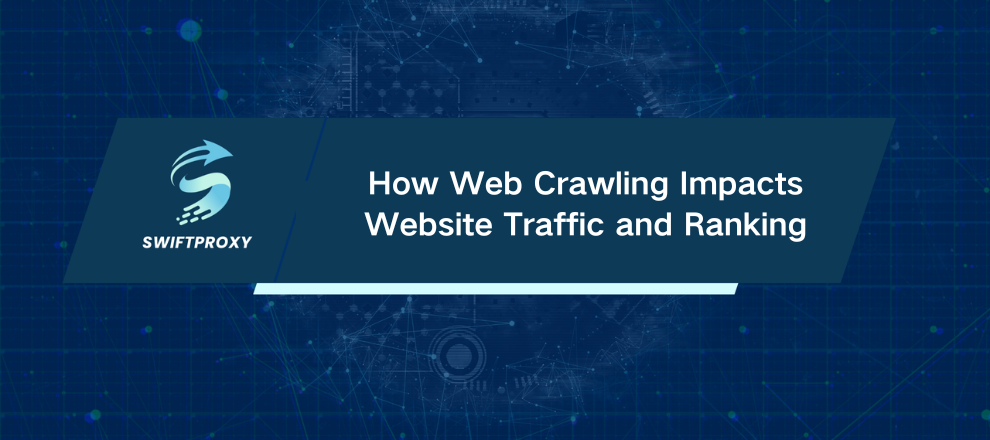How Web Crawling Impacts Website Traffic and Ranking
The internet is massive—over 200 million active websites live online today. That’s a staggering amount of content. And yet, somehow, search engines like Google manage to pull exactly what you need in seconds. How? The secret lies in web crawlers. Web crawlers, sometimes called spiders, roam the web, scanning content and telling search engines what each page is about. If you want your website to rank well and attract organic traffic, understanding these digital explorers is non-negotiable. Let’s dive in.

Understanding Web Crawling
Web crawling is the automated process of exploring websites, discovering their content, and feeding that data into search engines. Here's what web crawlers typically gather:
Metadata: Titles, meta descriptions
Internal and external links
Content: Paragraphs, headings, and blog text
Media: Images, videos, and other files
Page structure: Headings, titles, and other layout elements
Once crawlers collect this info, search engines index it and rank pages accordingly. This ensures users see the most relevant results first.
It's important to note that web crawling is not the same as web scraping. Web scrapers download specific data—like product prices or reviews—while crawlers merely discover and contextualize content.
Understanding Web Crawler
A web crawler is essentially a robot that travels across the web, gathering information for search engines. Major companies have their own crawlers:
Googlebot – Google
Bingbot – Microsoft
Amazonbot – Amazon
But you don't need to be Google to benefit. Small businesses can leverage free or open-source crawling tools to understand how search engines see their site.
The distinction is simple:
Crawling = discovering content
Scraping = extracting content
Often, businesses combine the two. Crawlers find the information, and scrapers pull the details needed for analytics, research, or marketing.
The Inner Workings of Web Crawlers
Web crawlers begin with a list of URLs, called seeds, usually homepages or landing pages. They check the robots.txt file first—a set of rules telling them which pages they can access and which to skip.
Next, crawlers fetch the HTML of the page and parse it. Parsing converts messy, unstructured code into a structured format that search engines can read. They also follow links to expand their reach across the website, ensuring nothing important is missed.
The process may sound simple, but it's highly customizable. Businesses can design crawlers that focus on specific topics, saving resources while collecting relevant data efficiently.
Comparing AI and Traditional Crawlers
AI is changing the crawling game. Traditional crawlers rely on fixed rules, while AI-powered crawlers adapt and learn. They can interpret content more intelligently using machine learning, natural language processing, and computer vision.
Applications extend beyond SEO. AI crawlers help train AI models, improve search algorithms, and collect focused insights faster than ever.
Is It Legal to Crawl the Web
Yes—mostly. Web crawling itself is generally legal. Web scraping, however, is trickier due to data privacy laws like GDPR.
Many websites welcome crawlers because it improves their search engine ranking. Still, website owners should be aware: crawlers download entire HTML documents, so using that data improperly—especially personal data—is illegal.
If your site isn't ranking as expected, tools like Google Search Console can highlight crawling or indexing issues and help you fix them.
Tips for Making Your Website Crawlable
Want search engines to love your website? Here's what to do:
Use clear internal linking: Connect pages logically. Help crawlers understand your site structure.
Create a sitemap: Submit an XML sitemap through Google Search Console. This is your site's roadmap.
Set up robots.txt: Control what crawlers can and cannot access. Don't block pages you want indexed.
Optimize loading speed: Aim for <3 seconds. Half a second? Even better.
Make it mobile-friendly: Google prioritizes mobile-first indexing.
Optimize SEO: Targeted keywords and structured content help crawlers understand your site.
Controlling and Blocking Website Crawlers
Sometimes you want to restrict crawler access. Here's how robots.txt rules work:
User-agent: *
Disallow: /
This blocks all crawlers from your site.
User-agent: Googlebot
Disallow: /client-names/
This blocks only Googlebot from accessing a specific folder.
Be careful because overly restrictive rules can harm your SEO.
Final Thoughts
Web crawlers are the unsung heroes of search engines, discovering and indexing the content that powers online search. Google, Amazon, and other tech giants rely on them—but so can small businesses with smart tools.
For website owners, making a site crawler-friendly provides a strategic advantage. A clean sitemap, well-designed robots.txt rules, fast loading speeds, and strong SEO practices help crawlers find content easily while also improving page rankings for users.


















































